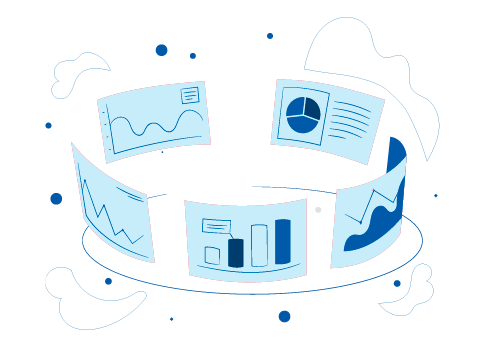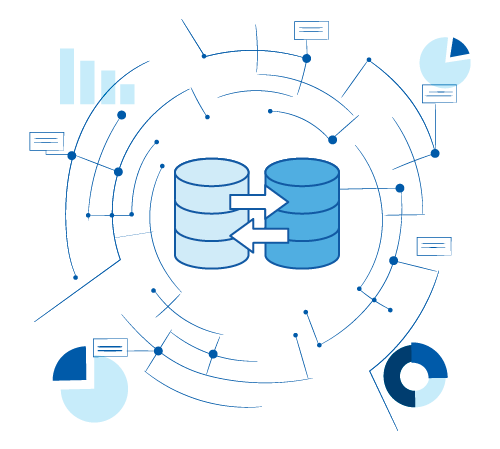Written by: Daniel Johnson / VP of Business Development at GraVoc
ERP implementations are hard work…
There are a lot of moving parts, a lot that can go wrong, and the landscape of players in the market is ever-changing. And I haven’t even brought up the cost yet.
I understand acutely that you, as an end-user, don’t have many resources available to help objectively parse fact from fiction when it comes to choosing a path forward.

That’s why, after 20+ years of providing ERP selection and implementation consultation, I feel comfortable speaking some hard yet common sense truths on the matter. I believe a well-informed consumer is better equipped to make decisions about what’s right for them and their company and tend to have more positive project outcomes.
In the following paragraphs I lay out, at an extremely high level, the overarching themes we experience when helping customers who are considering upgrading from Dynamics AX to Dynamics 365 Finance & Supply Chain Management.
We’re talking about AX 4.0 (are any of you still out there?!), AX 2009, and AX 2012 users who are contemplating a move to Dynamics 365 Finance & Supply Chain Management (formerly “Operations”). And if you aren’t running one of those ERP’s, I think these concepts hold up for almost any ERP.
#1 Embrace the Change:

Dynamics 365 Finance & Supply Chain Management (F&SCM for short) is not AX 2009 or even AX 2012:
Yes, they’re in the same family….BUT in the same way that a Ford F-150 is in the same family as a Model T.
Yes, one evolved from the other…. BUT the form, fit, and function (the underlying structure, technology, and features) are vastly different from its predecessors. The same can be said for Dynamics AX and Dynamics 365.
Yes, they share the Dynamics pedigree, and there are features and functionality that is similar….BUT you are, in essence, implementing a new ERP system.
If you haven’t undergone either an internally or externally led Business Process Review, I’d highly recommend it. Business Process Reengineering, identification of new/changed/deprecated features and enhancements, and Organizational Change Management are all critical aspects of any ERP implementation, upgrade, or migration.
In the case of a Dynamics AX 2009 or AX 2012 migration to Dynamics 365 Finance & Operations, a thorough Business Process Analysis will enable you to better understand what you’re getting into. For a nominal upfront investment (it’s a necessary part of process anyway) you’ll be equipped with what changes will need to be made, to what extent, and at what amount of effort.
#2 Let go of the Past:

The Chinese philosopher Lao Tzu wrote “When I let go of what I am, I become what I might be.” The same can be said for organizations implementing business management applications.
One of the signature characteristics of AX 2009 was the ability to be customize it extensively to meet unique business requirements. The flip side of that benefit, however, is that the enormous level of customization in legacy AX 2009 and AX 2012 instances can pose challenges when migrating to Dynamics 365 Finance & Supply Chain Management.
Perhaps the least effective use of time, effort, and money in an ERP implementation is the wholesale recreation of customizations that were created in legacy X++. There’s no automated way to refactor this code reliably and the very process itself for creating customizations in the new environment has changed completely due to the nature of the Azure-based multi-tenant delivery model of Dynamics 365. If the reason for customizing your ERP system is ‘this is the way we’ve always done it’, I would respectfully suggest that is the wrong reason to change the inherent business logic of your enterprise information system.
If you have gone through a thorough Business Process Analysis and/or Conference Room Pilot in the context of how Dynamics 365 executes specific business processes and you’ve found gaps or, if the way you’ve always done it is a significant and demonstrable competitive differentiator, that is a good reason to invest in customization. Otherwise process reengineering or, in some cases, the judicious application of 3rd party software applications makes better sense than customization.
# 3: Get Your (Data) House in Order:

One of the most difficult aspects of moving from AX 2009 or AX 2012 to Dynamics 365 Finance & Operations is migrating data from one application to another. Despite the hype around the Data Migration Tool, the fact is that it doesn’t take everything over and what it does take over, certainly isn’t seamless.
If you’re a Manufacturer or Distributor running older, highly customized versions of AX, the DMT (as it is known in the biz) isn’t going to migrate all of your core tables, none of your custom tables or fields, and will not carry over data packages. Each custom field will have to be created in F&SCM and a new data entity created to incorporate that field. Most data packages will need to be manipulated to transfer it into F&SCM.
So, if you have hundreds of custom fields and data packages there will be considerable time spent in getting that information into the new application. In addition, core elements like parameters and posting definitions and profiles have changed so much between AX 2009, 2012, and Finance and Operations you will have to recreate most of these.
So, what’s the answer? Interestingly Lao Tzu also said:
“Simplicity, patience, compassion. These three are your greatest treasures.”
Simplicity
Limit the amount of data you need to migrate. Begin cleansing your data today or, at a minimum, define and assign a data cleansing strategy.
Identify any data that can be purged, archived, or otherwise pared down to a reasonable extent. If you intend to ultimately use Power BI or Tableau for dashboarding and data visualization, you’ll thank me.
Patience
It’s going to take time. Work with an expert with knowledge in performing data migration in the context of the ERP system you’re moving to. Knowledge of the legacy system you’re moving from is nice but, ultimately, less meaningful than understanding how data populates, flows, and is consumed in the new ERP system.
Assuming you can export data from your legacy ERP system, you can then put it into import templates to be scrubbed and formatted for upload into the new ERP system.
Compassion
It is defined as “sympathetic pity and concern for the sufferings or misfortunes of others.” Try to be generous with the former because there will be plenty of the latter to go around. Per my opening statement, ERP implementations are hard, as are their corresponding activities.
Mistakes may get made, emotions will ebb and flow, but ultimately people will work extremely hard to reach what are often very difficult goals. I have yet to work on a project in 20+ years where the people involved don’t care very deeply about the outcome. Be as kind as you can to the people on your team and they will move mountains for you.
Have any thoughts or questions on this topic?
Want to speak with the Microsoft Dynamics AX or Dynamics 365 experts on our team? Please give me a call or drop me a line! I can be reached at:
Dan Johnson
(978) 538-9055 x 196
Related articles
Dynamics GP to Business Central Migration: Key Insights from our Webinar
In case you missed our webinar on Dynamics GP to Business Central migration, here are 5 expert insights from our ERP specialist, David Laster!
Dynamics GP End of Support: Compliance Risks You’ll Face After 2029
Here, we go over the tax and security compliance risks of staying on Dynamics GP post the December 2029 end-of-support deadline.
Introducing Dynamics GP 18.7: Top 6 New Features
Dynamics GP 18.7 has been released. Here is a look at GraVoc’s top 6 favorite new features of this latest update.




